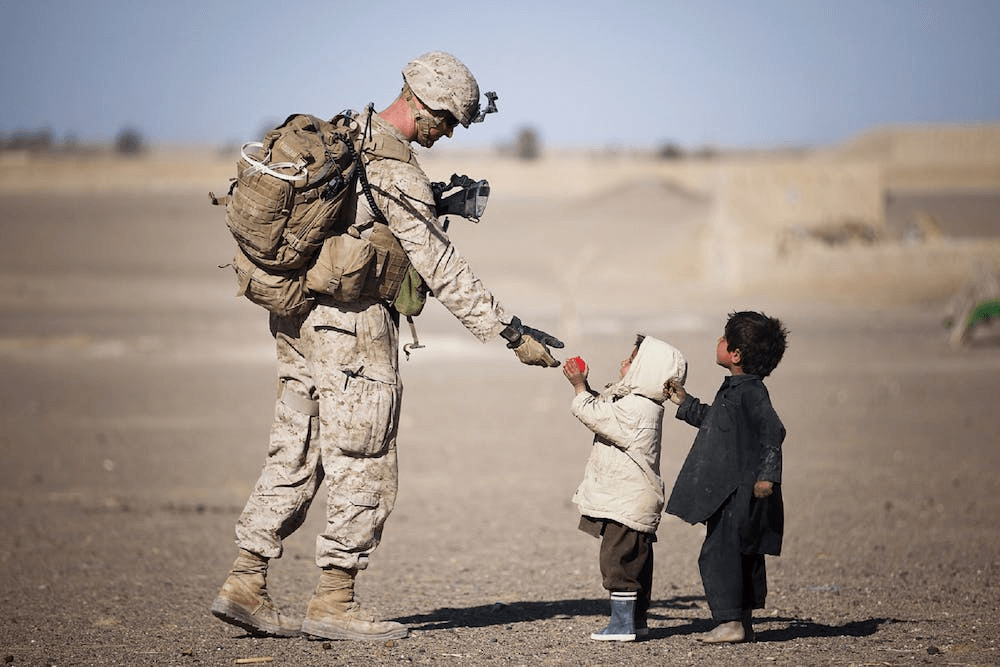📑Table of Contents:
IRA terrorism, a term steeped in decades of history, evokes a range of emotions and memories, particularly in Ireland and the United Kingdom. This blog post aims to explore the intricate history of the Irish Republican Army (IRA), its transformation into a terrorist organization, and the profound impact it has had on politics, society, and global terrorism discourse.

Historical Background
Introduction to Irish Nationalism and Early Struggles: To understand the roots of IRA terrorism, it’s essential to delve into the broader historical context of Irish nationalism. The desire for Irish self-governance dates back centuries, marked by numerous rebellions against English, and later British, rule. The late 19th and early 20th centuries saw a resurgence in Irish nationalist sentiment, primarily driven by cultural revival and political movements seeking Home Rule – a form of semi-autonomy within the United Kingdom.
Formation and Role of the Original IRA: The Irish Republican Army (IRA) emerged from this milieu of growing national consciousness. Formed in 1919 from the Irish Volunteers, an organization established to defend Home Rule, the IRA aimed to establish an independent Irish Republic. This period coincided with the Irish War of Independence (1919-1921), during which the IRA, under leaders like Michael Collins and Éamon de Valera, engaged in guerrilla warfare against British forces.
The Anglo-Irish Treaty and the Irish Civil War: The conflict led to the 1921 Anglo-Irish Treaty, which created the Irish Free State, a dominion of the British Empire, while partitioning Northern Ireland. The treaty was contentious, splitting the IRA and leading to the Irish Civil War (1922-1923). One side, the pro-treaty forces, supported the compromise with Britain, while the anti-treaty faction, seeing the treaty as a betrayal of the Irish Republic declared in 1916, continued armed resistance.
The IRA Post-Civil War: Fragmentation and Ideological Shifts: After the Civil War, the IRA struggled with internal divisions and a loss of public support. Throughout the 1920s and 1930s, it underwent several ideological shifts, oscillating between militarism and political activism. During this time, the IRA also engaged in sporadic attacks against Northern Ireland, aiming to destabilize the region and promote Irish unification.
The IRA and The Troubles: The situation dramatically changed in the late 1960s with the onset of The Troubles in Northern Ireland. Civil rights protests by the Catholic minority against discrimination by the Protestant majority and the Northern Irish government escalated into widespread violence. The British Army’s intervention further aggravated the situation. During this period, the IRA split into two main factions: the Official IRA, which initially focused on the defense of Catholic neighborhoods but soon declared a ceasefire, and the more militant Provisional IRA, which embarked on an armed campaign against British rule.
This era marked the beginning of what is commonly referred to as “IRA Terrorism.” The Provisional IRA’s campaign was characterized by bombings, assassinations, and kidnappings, aimed at ending British rule in Northern Ireland and achieving Irish unification.
IRA’s Evolution into Terrorism
Post-Civil War Era and the Emergence of a Divided IRA: In the aftermath of the Irish Civil War, the IRA found itself grappling with existential questions about its identity, purpose, and tactics. During the 1920s and 1930s, the organization remained engaged in various forms of resistance against the British presence in Northern Ireland but was largely marginalized in the Free State, which became the Republic of Ireland in 1949.
The 1950s Border Campaign: The 1950s saw the IRA attempting to revive its campaign against British rule with the Border Campaign (1956-1962), targeting Northern Ireland’s border areas. This campaign, however, failed to gain significant support or impact, leading to further introspection within the organization about its future direction.
The Impact of the Civil Rights Movement in Northern Ireland: The late 1960s marked a pivotal turn. The civil rights movement in Northern Ireland, advocating for equal rights for the Catholic minority, faced violent reactions from the Protestant majority and the Northern Irish government. The situation deteriorated rapidly, with communal violence escalating. The British Army’s deployment in 1969 to restore order further intensified the conflict.
The Birth of the Provisional IRA: Amidst this chaos, the IRA split into two factions in 1969: the Official IRA and the Provisional IRA. The Provisional IRA, disillusioned with the Official IRA’s reluctance to defend Catholic neighborhoods aggressively, embarked on a more militant campaign. This marked the beginning of the Provisional IRA’s evolution into a full-fledged terrorist organization.
From Defence to Offence: The Provisional IRA’s Campaign: The early 1970s witnessed the Provisional IRA shifting from a defensive posture to an offensive strategy. They began a concerted campaign of bombings, assassinations, and kidnappings. The aim was not just to defend the Catholic community but to force a British withdrawal from Northern Ireland and achieve a united Ireland.
Tactics and International Connections: The tactics used by the Provisional IRA during this period were characterized by their brutality and sophistication. They included car bombings, pub bombings (notably the Birmingham pub bombings in 1974), and attacks on political and military targets. The group also developed international connections, obtaining arms and funding from sources like Libya and sympathizers in the United States.
Publicity and Propaganda: An essential aspect of the IRA’s evolution into terrorism was its use of publicity and propaganda. The IRA skillfully manipulated media coverage to highlight the plight of the Catholic community in Northern Ireland and to justify its actions as a fight against British oppression.
Impact of Hunger Strikes and Political Shifts: The 1981 hunger strikes, in which ten IRA and Irish National Liberation Army (INLA) prisoners died, including Bobby Sands, marked a significant turning point. The strikes brought international attention to the IRA’s cause and led to a surge in recruitment. It also paved the way for the IRA’s political wing, Sinn Féin, to gain substantial electoral support, leading to a dual strategy of armed struggle and political engagement.
Are you looking for a gateway to the global opportunities? Grenada citizenship could could help you.

Key Figures and Events
Introduction to Influential Figures in the IRA: The history of IRA terrorism is marked not only by its campaigns and tactics but also by key figures whose actions and ideologies shaped the organization’s direction. These individuals played pivotal roles in the IRA’s evolution and some of the most significant events in its history.
Michael Collins and Early IRA Leadership: Michael Collins, a key figure in the early 20th century, played a crucial role in the Irish struggle for independence. As a leader of the original IRA during the Irish War of Independence, Collins was instrumental in organizing guerrilla warfare tactics. Although not directly involved in what would later be known as IRA terrorism, his methods and vision laid the groundwork for future generations of the IRA.
Éamon de Valera and the Political Struggle: Eamon de Valera, another prominent figure in early Irish independence, played a complex role in the IRA’s history. As a political leader, he was involved in the anti-treaty side during the Irish Civil War and later served in various political roles in independent Ireland. His relationship with the IRA was often contentious, particularly as he moved from a revolutionary stance to a more conservative political position.
The Rise of the Provisional IRA: Key Figures:
- Bobby Sands: Perhaps one of the most iconic figures associated with the IRA, Bobby Sands’ hunger strike and subsequent death in 1981 brought international attention to the IRA’s cause. His actions highlighted the political dimensions of the IRA’s campaign and the depth of the conflict in Northern Ireland.
- Gerry Adams and Martin McGuinness: Both were pivotal in the shift towards political strategies in conjunction with the armed struggle. As leaders within Sinn Féin, the IRA’s political wing, they played crucial roles in the peace process, including the Good Friday Agreement.
Significant Events in IRA Terrorism:
- Bloody Sunday (1972): Although not an IRA operation, the killing of 14 unarmed civil rights protesters by British soldiers in Derry significantly escalated the conflict, leading to increased support for the IRA and a surge in recruitment.
- Brighton Hotel Bombing (1984): This attack targeted the British government, specifically a hotel hosting the Conservative Party Conference, killing five people. It was a stark demonstration of the IRA’s reach and capabilities.
- The Harrods Bombing (1983) and the Manchester Bombing (1996): These attacks were part of a broader bombing campaign on British soil, aimed at causing economic damage and disruption. The Manchester bombing was one of the largest bombs detonated in Great Britain since World War II.
Impact on Ireland and the UK
Introduction to the Socio-Political Impact: IRA terrorism had profound and multifaceted impacts on both Ireland and the United Kingdom, reshaping political landscapes, altering societal structures, and leaving a legacy of trauma and division that continues to resonate.
Political and Governance Impact:
- Northern Ireland: The IRA’s campaign significantly impacted the governance of Northern Ireland. The British government’s response, including the introduction of Direct Rule in 1972, was a testament to the severity of the situation. This move essentially suspended the Northern Irish Parliament, transferring full control to London, and was seen as a direct consequence of the IRA’s campaign.
- Republic of Ireland: In the Republic of Ireland, the government faced the challenge of balancing its approach to Northern Ireland and the IRA. The IRA’s activities often strained relations between Dublin and London and impacted domestic politics, including security policies and civil liberties.
Economic Consequences:
- Direct Economic Damage: The IRA’s bombing campaigns, particularly in urban centers in Northern Ireland and England, caused substantial property damage, disrupted business activities, and deterred investment and tourism.
- Cost of Security: The cost of policing and security in response to the IRA threat was enormous for both the UK and Ireland. This included the cost of maintaining a significant military presence in Northern Ireland and funding counter-terrorism measures.
Social and Community Impact:
- Division and Sectarianism: The IRA’s activities exacerbated sectarian divisions in Northern Ireland, with communities becoming increasingly polarized. This division manifested in daily life, including segregated neighborhoods and schools, and contributed to a persistent atmosphere of mistrust and fear.
- Loss of Life and Trauma: The human cost of IRA terrorism was significant, with thousands of lives lost, including civilians, IRA members, security forces, and others. The psychological impact of this violence on individuals and communities was profound, leading to widespread trauma and grief.
Impact on British and Irish Relations:
- Strained Diplomatic Relations: The IRA’s campaign strained relations between the UK and Ireland, particularly during periods of intense violence. Diplomatic efforts were often complicated by differing approaches to Northern Ireland and the IRA.
- Cooperation in Counter-Terrorism: Despite these challenges, the threat posed by the IRA eventually led to increased cooperation between British and Irish security forces. This cooperation was crucial in mitigating the impact of IRA activities and laid the groundwork for future peace negotiations.
Cultural and Media Influence:
- Media Coverage and Perception: The IRA’s activities received extensive media coverage, influencing public perception in both Ireland and the UK. The portrayal of the conflict and its participants often varied significantly, reflecting and reinforcing societal divisions.
- Cultural Expression: The conflict and its impacts have been widely reflected in cultural mediums such as literature, film, music, and art, both in Ireland and internationally. These cultural expressions often serve as a means of processing and interpreting the complex emotions and narratives surrounding the IRA’s campaign.
In the context of understanding the global impact of political movements such as IRA terrorism, it’s fascinating to consider how cities known for their historical significance also embrace peace and festivity. Take, for instance, Vienna during Christmas. This city, steeped in a history that has witnessed its share of political upheavals, transforms into a beacon of joy and celebration during the holiday season.

Ongoing Legacy and Relevance
Introduction to the Lasting Effects: The legacy of IRA terrorism extends far beyond the cessation of its armed campaign, influencing political, social, and cultural landscapes in Ireland, the UK, and beyond. This ongoing legacy is multi-dimensional, reflecting the deep and complex impacts of the conflict known as The Troubles.
Political Repercussions and Peace Process:
- Northern Ireland’s Political Landscape: The Good Friday Agreement of 1998 was a watershed moment, largely ending the violence and restructuring political power in Northern Ireland. However, the legacy of the IRA has continued to influence the region’s politics, evident in the power-sharing arrangements and the delicate balance maintained between different communities.
- Sinn Féin’s Evolution: The political wing of the IRA, Sinn Féin, has transitioned into a significant political force in both Northern Ireland and the Republic of Ireland. This shift from the margins of armed struggle to mainstream politics is a direct legacy of the IRA’s historical role.
Societal Healing and Memory:
- Community Relations: Despite the official end of hostilities, societal healing remains a challenge. Communities in Northern Ireland continue to grapple with issues of trust, memory, and identity, with the IRA’s actions and the state’s response still a source of division for many.
- Commemoration and Memory: How the conflict and the IRA are remembered and commemorated is a contentious issue. Public memorials, educational curricula, and community initiatives all reflect the ongoing process of dealing with the past.
Legal and Judicial Impact:
- Ongoing Investigations and Trials: Decades later, investigations and legal proceedings related to actions taken during The Troubles continue. These cases often reopen old wounds and bring the complexities of justice and reconciliation to the fore.
Cultural and Academic Interest:
- Influence on Art and Literature: The IRA and The Troubles have become a significant theme in literature, film, music, and art, shaping both Irish and British cultural outputs. This artistic engagement serves as a form of collective memory and reflection.
- Academic Study and Public Discourse: The IRA’s campaign and its impacts remain a topic of extensive academic study and public discourse, contributing to our understanding of terrorism, conflict resolution, and political movements.
International Perspective and Comparisons:
- Global Terrorism Discourse: The IRA’s actions and the subsequent peace process have been studied worldwide as a case study in understanding and combatting terrorism. Conflict resolution offers insights into negotiating peace in deeply divided societies.
- Comparative Conflicts: The IRA’s legacy is often referenced in discussions of other separatist movements and conflicts, offering lessons on the complexities of balancing political aspirations with moral and ethical considerations.

Conclusion
IRA terrorism, a multifaceted and contentious chapter in the history of Ireland and the UK, offers critical lessons in understanding political violence and the complexities of conflict resolution.
By examining the IRA’s history, motivations, and impact, we gain insights into the enduring challenge of achieving lasting peace in regions torn by political strife.





